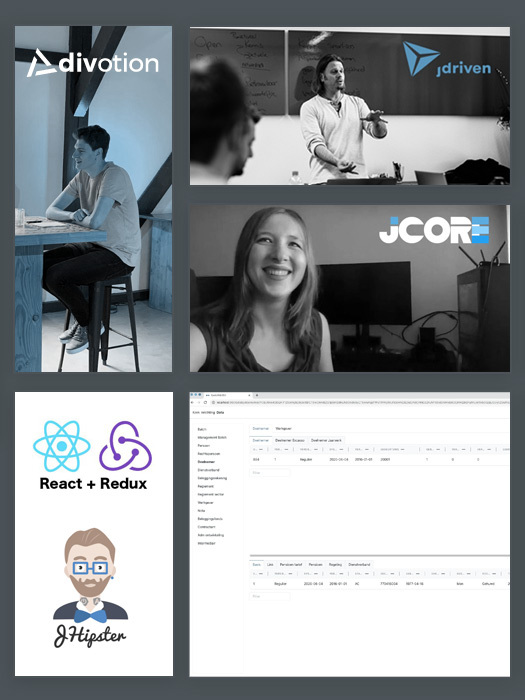Divotee Lourens Kaufmann
At Divotion, we like to say front-end development knows few secrets for our developers. And we’re passionate about new technologies and making the best possible solutions for our clients.
What better way to demonstrate these claims by interviewing our developers about their views on what’s new in front-end development. In this article, Lourens shares his thoughts on server side rendering, accessibility and a misconception about full stack developers.
What’s the latest trend in enterprise front-end development?
"I’d say server side rendering is taking flight. It’s not necessarily new, but it’s becoming increasingly important because it has some great advantages over single page applications (SPAs). SPAs use a technique called client side rendering.
This means that the logic that decides what is displayed on the page is run in the browser. Server side rendering keeps that logic on the server. This has many advantages, including faster loading times and a better user experience. This is because when the page is loaded it’s interactive from the get go.
Server side rendering also has benefits in terms of search engine optimization (SEO). Content becomes easier to be indexed for search engines, which means pages will rank higher. Combined with a better user experience, these changes should have positive effects for SEO-rankings."
You wrote multiple blogs about accessibility. Why does this tickle your fancy?
"To me, accessibility is such an important aspect of web development because it significantly influences most other aspects, like performance, user experience, and effectiveness. In e-commerce, it holds the power to increase revenue by for example opening up the application to a larger audience or increasing the conversion rate of older people.
Accessibility is also relevant at governmental or healthcare institutions, where it’s of great importance to make sure important and necessary information is available to everyone. People tend to forget about the importance of accessibility, but it’s not ‘just’ for people with disabilities.
Each of us will have to deal with decreased vision, reduced motor functions or bad hearing eventually. Whether that’s from permanent causes like aging, or temporary causes like a broken arm or a loud room, accessibility is essential for some and useful for all.
I think one of the biggest keys to accessibility are proper use of semantic HTML, proper use of attributes, and page structure. If you do that right from the start, my guess is you solved 90% of accessibility issues.
To come closer to 100%, I think user testing with people with a wide range of physical and cognitive disabilities is essential.. If you do that thoroughly, you’ll improve the user experience and effectiveness of your entire application - for everyone."
So.. could this be front-end development’s biggest blind spot?
"I partially agree with that. Accessibility is not just front-end developers responsibility, stakeholders need to start taking it more seriously too. It appears to have a more indirect effect on something like profitability, so the importance and benefits have to be communicated more effectively.
For example, I think it should be made clear to everyone involved with a project that making a product accessible at the end of a project is much more expensive than thinking it through from the start. The benefits of accessibility aren’t limited to only inclusivity, there are also financial incentives.
Another blindspot, or misconception I want to mention has less to do with accessibility. It’s about the way people look at the role of full stack developers. I’ve often heard that full stack developers are limited in their ability to add value to a team because of their inherent inability to specialize in for example front-end or back-end.
I think that’s a problematic way to look at the role, because specialization isn’t the only way to add value to a team. I’m convinced the strength of a full stack developer comes from their ability to navigate and communicate through a wide range of technology stacks enabling them to be the glue of a development team. Specialization is still a very important part of a development team though.
Considering all this, I make the case that, generally speaking, the ideal development team combines specialized front-end, specialized back-end, and full stack developers to achieve a both specialized and collaboratively efficient team."
Would you like to add Lourens or one of our other front-end developers to your team? Check out https://divotion.com/divoted or contact Juliëtte at 06 - 42078127 or info@divotion.com



 Frameworks at Crossroads Europalaan 93, 3526 KP Utrecht
Frameworks at Crossroads Europalaan 93, 3526 KP Utrecht